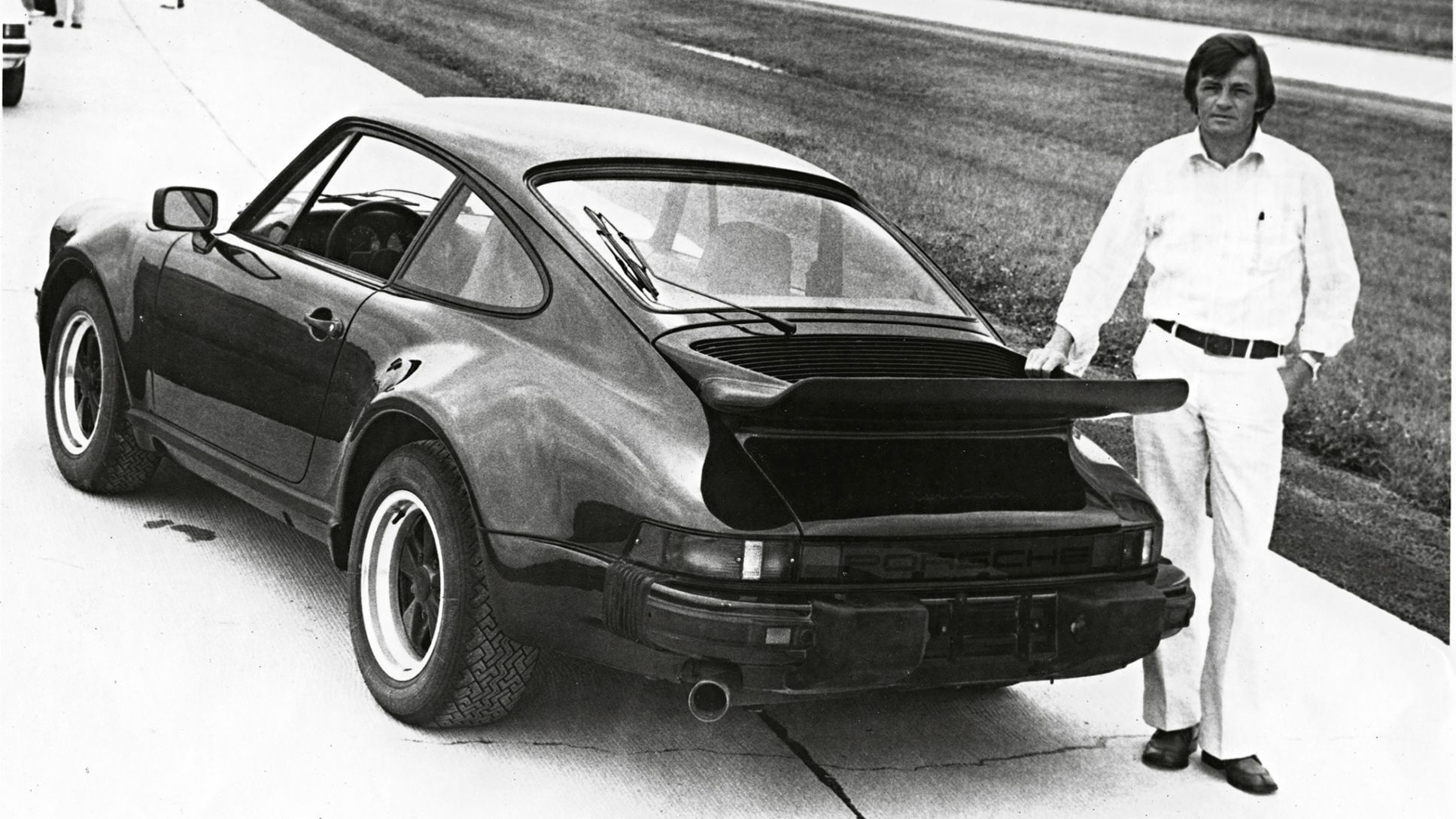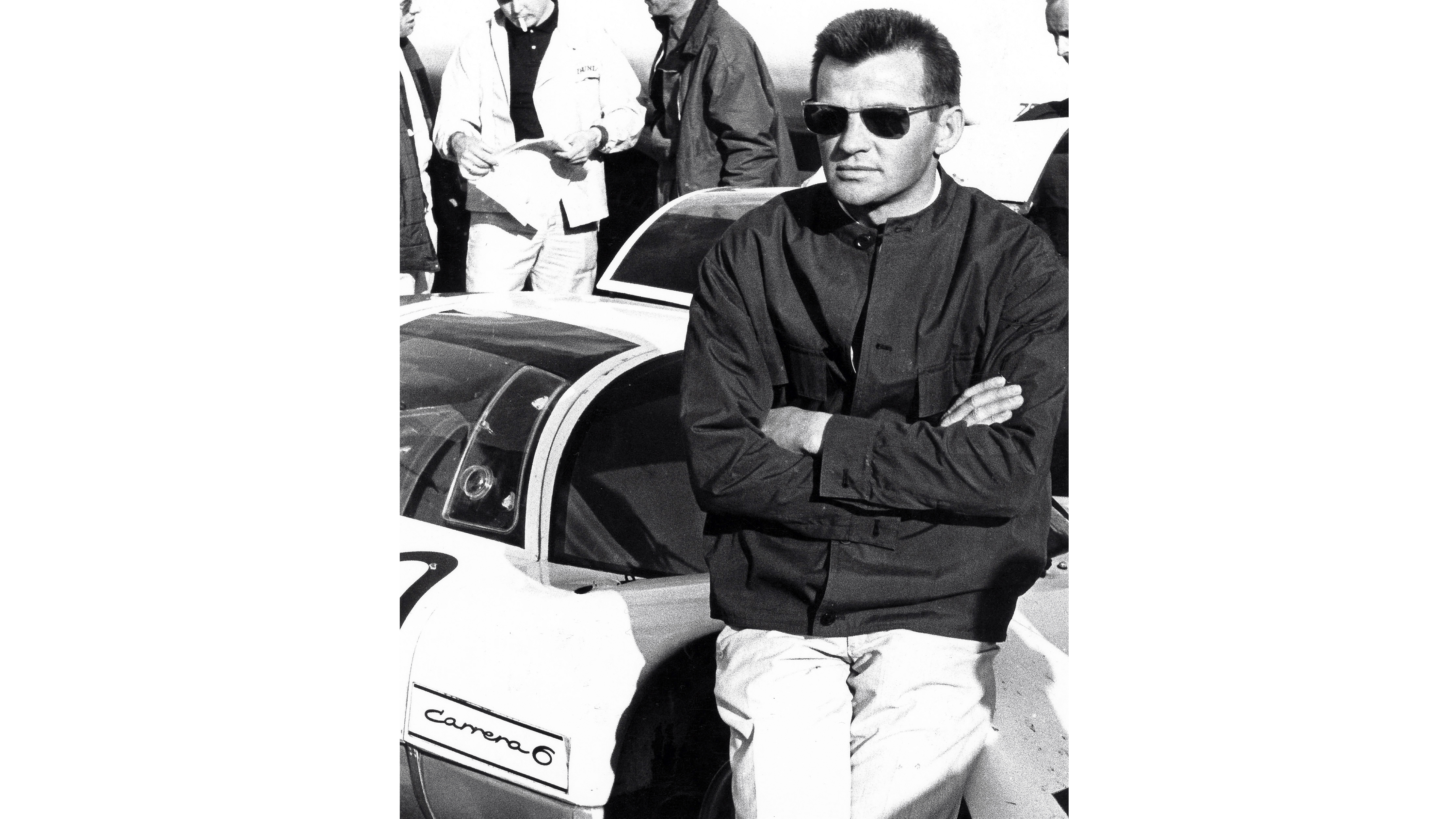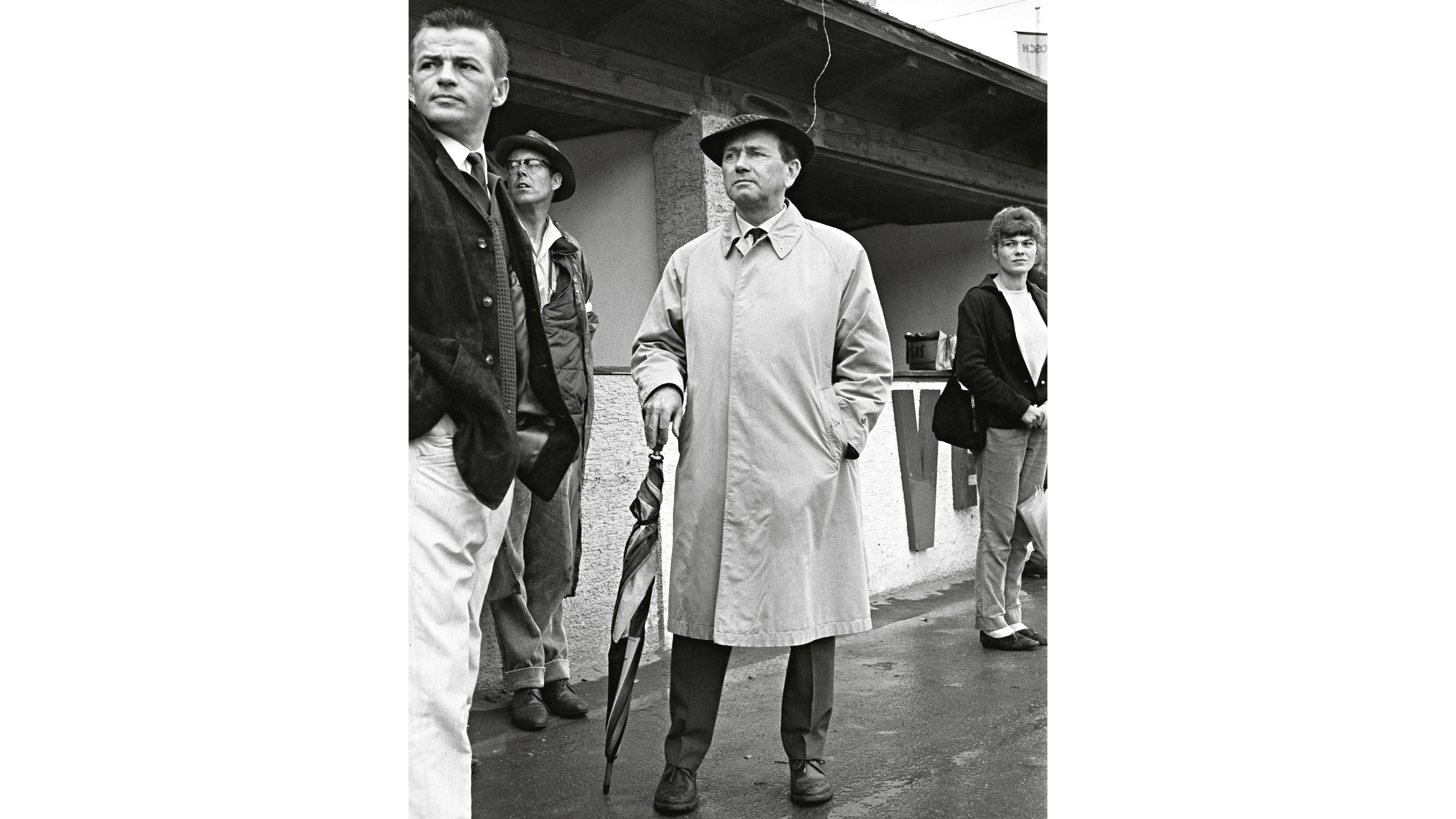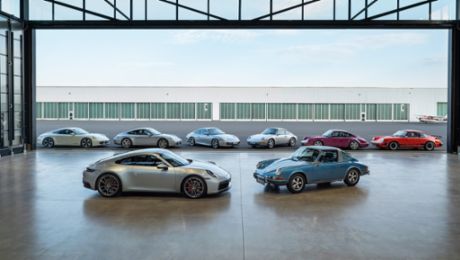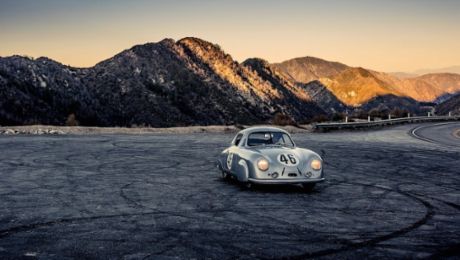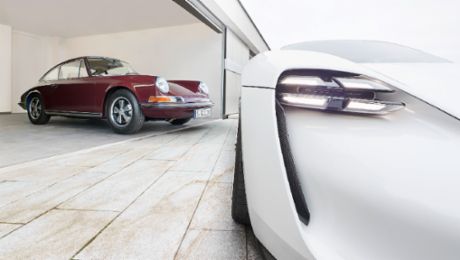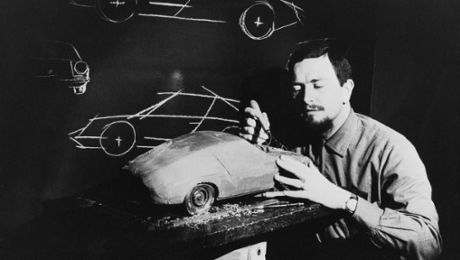“At Le Mans in 1969 we were a whole lot faster than the competition with the 917. If the transmission housing hadn't cracked, we would have won comfortably.” Hans Mezger on the first Le Mans outing of the still-fledgling 917.
When a motorsport fan recalls a list of the outstanding designers of race cars and racing engines, not many names come up. However, one is always among them and for many fans and experts he is the top name: Hans Mezger, designer of the air-cooled six-cylinder boxer engine of the Porsche 911, overall designer of the 917 and its V12 with a 180 degree bank angle, and creator of the TAG Turbo Formula One engine. Hans Mezger and his portfolio of work have long since become legendary. But first things first. Hans Mezger was born on November 18, 1929 in Ottmarsheim, a small village near Ludwigsburg on the outskirts of Stuttgart. The youngest of five children, his parents ran a country inn.
Art and culture were very important to the Mezger household. “Almost everyone in our family had a talent for painting and played a musical instrument," says Mezger, looking back on his childhood and youth. "I found life exciting and attended elementary school. I was interested in becoming all kinds of things, from a musician to a physicist.” Aeroplanes and flying also fascinated the young Hans from an early age, and he occasionally undertook a trip to Kirchheim/Teck with a group of gliding enthusiasts from his neighbourhood, where he would watch the bungee launches of the school’s glider, the SG-38, with fascination. “I really wanted to fly myself, but I was still too young then,” he remembers.
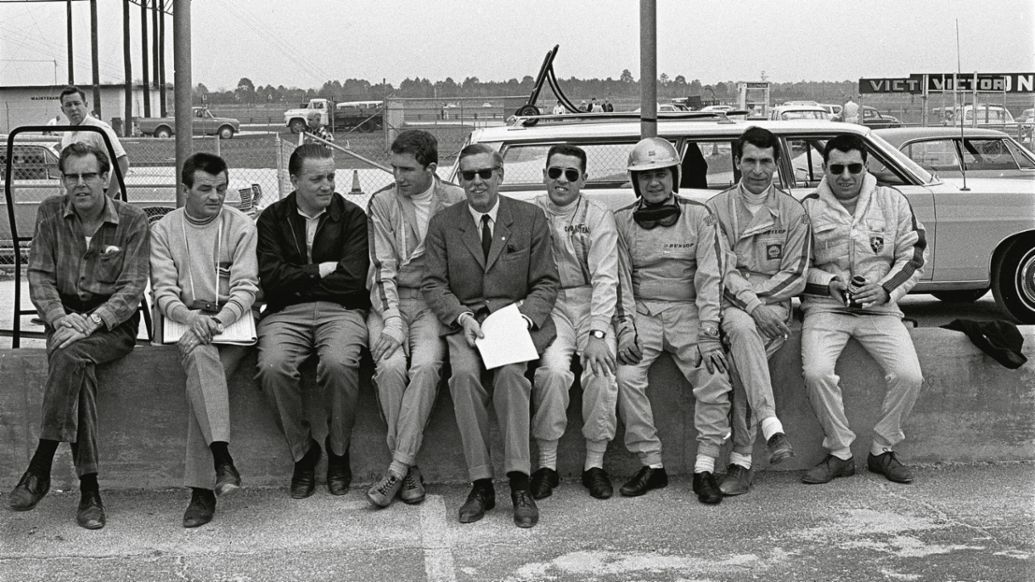
The Third Reich, and the second world war, came right in the middle of his carefree childhood and adolescence and attendance at grammar school. On April 18, 1945, just three weeks before the end of the second world war, Mezger only escaped serving in the war by a stroke of luck and a faked medical certificate from a German commander. Since the design, construction and operation of aircraft were banned by the Allies – gliding was only possible again in 1951 and motorised flight in 1955 – an aviation career was out of the question for Mezger. “That would have meant waiting too long, so I decided to study mechanical engineering at the Technical University, now the University of Stuttgart,” recalls the Swabian, who always found mathematics particularly easy.
“Maybe it was the champagne, but we had a lively discussion about whether the Porsche engine or the McLaren chassis had won the first Grand Prix. We joked and found that the word ‘Engineer’ was after all derived from ‘Engine’.” Hans Mezger on the first victory of the McLaren TAG Turbo in Rio de Janeiro 1984.
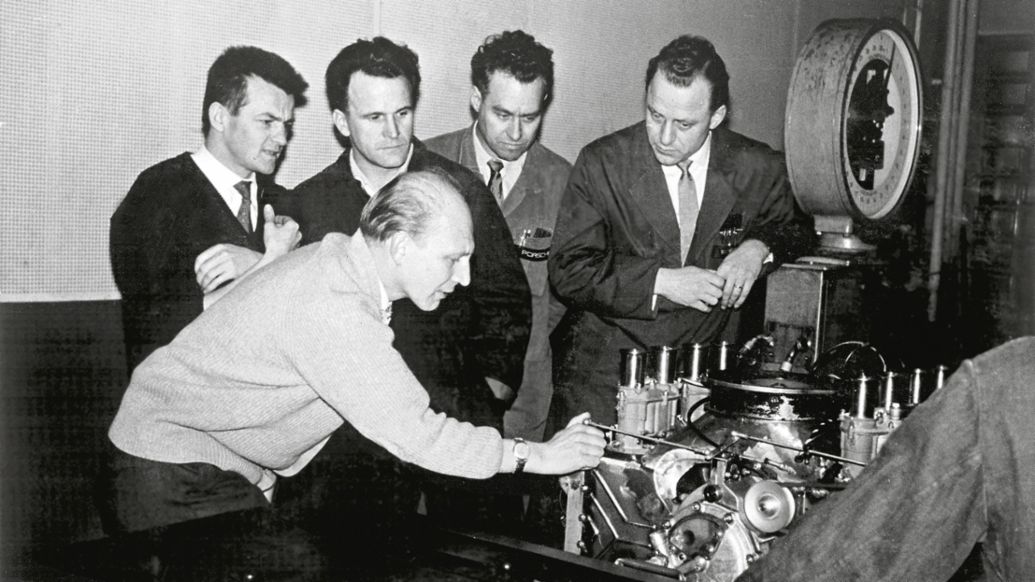
His graduation in 1956 was accompanied by a veritable flood of job offers. “There were 28," he says, "but Porsche was not one of them. But I wanted to join Porsche, because the Type 356 sports car inspired me. So I applied, was invited, and the company offered me a job in tractor development. But I envisioned working on sports and race cars. Fortunately, that worked out in the end, and I started in the calculation department at Porsche.”

Things then happened one after the other, so to speak. Hans Mezger gained his first experience with the four-camshaft engine, developed a formula for calculating cam profiles and became part of Porsche’s first Formula One project in 1960. He was involved in the development of the 1.5-litre eight-cylinder Type 753 as well as the corresponding chassis of the 804. “The company was still so small at that time, there was quite a lot of overlapping work and the staff working on the engines sometimes also worked on the chassis,” says the 89-year-old.
Then came the world-famous 'Mezger engine' for the 901 and 911 and, in 1965, the promotion to head of the racing development department created by Ferdinand Piëch. This department was the key to a new quality and dynamism in motorsport for Porsche. It was an exciting, wild time in the mid-1960s. "Sometimes we also worked around the clock," Mezger says. "For example, when the so-called Ollon-Villars-Spyder was created in just 24 days in 1965." With its construction of a tubular frame and fibreglass body, it became the blueprint for all the race cars that were built in the years to follow.
Porsche also relied on this design principle for the development of the 917 in 1968. With the 917, the first overall victory for Porsche at Le Mans was now finally possible, and once again Ferdinand Piëch relied on the skilfulness of Hans Mezger, who took over the overall construction of the vehicle and its 12-cylinder engine. In 1970 and 1971, the 917 dominated at Le Mans and the World Sportscar Championship; in 1972 and 1973, the 917/10 and 917/30 showed the way in the CanAm series thanks to turbocharging – technology that Mezger and his team brought to series production in 1974 in the form of the 911 Turbo.
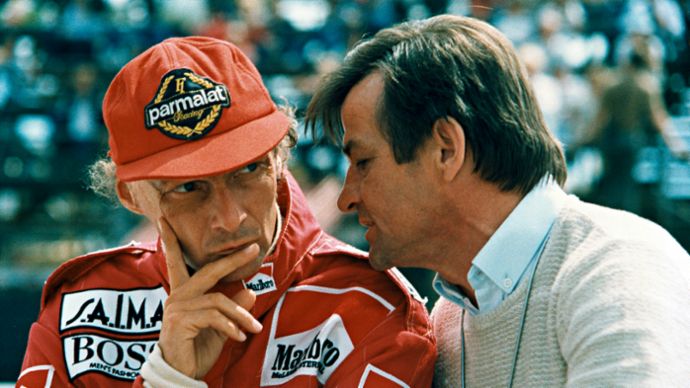
Many other victorious developments followed: for the 24 Hours of Le Mans, the World Sportscar Championship and the US Indy series. But perhaps the most outstanding project took off in 1981 when Ron Dennis and his McLaren racing team set out in search of a powerful turbo engine. In the end, Porsche was chosen and the decision was made to design and build a completely new engine, as well as to provide on-site support during the races. Again, Hans Mezger was the creative mastermind behind the 1.5-litre, V6 engine with an 80 degree bank angle, which would produce more than 1,000 PS later in the race. In 1984, Niki Lauda became world champion with this, followed in 1985 and 1986 by Alain Prost. The team also won the two Constructors’ World Championships in 1984 and 1985. “This was a tremendous success and, at the same time, the most important development contract for Porsche from an external company,” adds Mezger, who retired in 1993 and is still closely associated with Porsche today.
Info
Text first published in the magazine „Porsche Klassik“, special edition „8 generations 911“.
Text by Jürgen Gassebner
Photos by Historical archive, Porsche AG
Copyright: The image and sound published here is copyright by Dr. Ing. h.c. F. Porsche AG, Germany or other individuals. It is not to be reproduced wholly or in part without prior written permission of Dr. Ing. h.c. F. Porsche AG. Please contact newsroom@porsche.com for further information.
